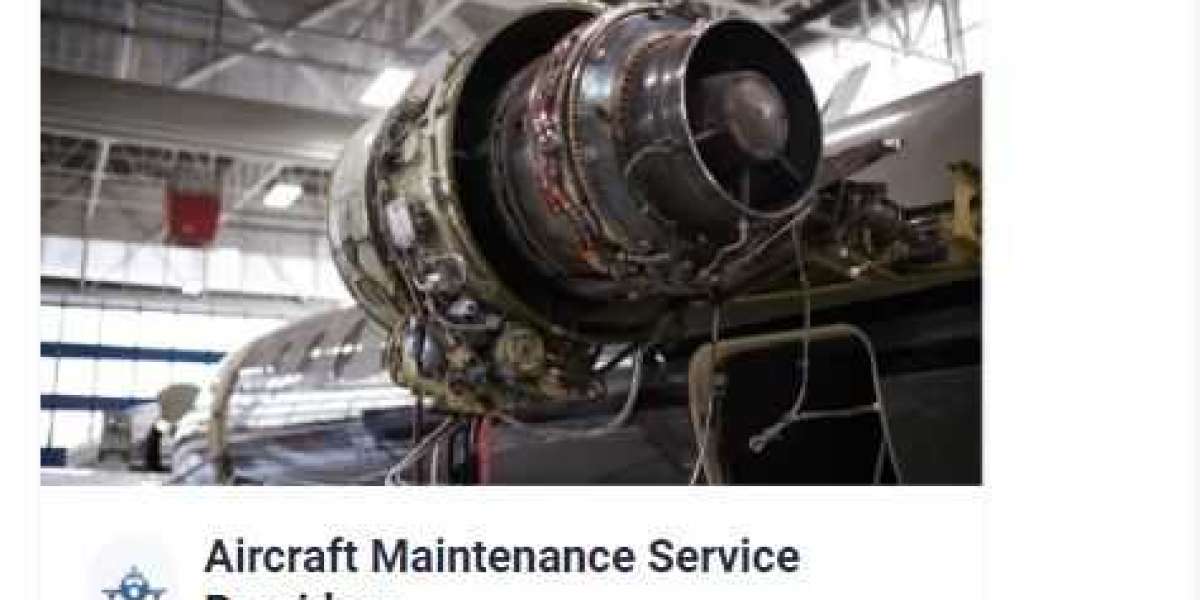The aviation industry has undergone tremendous transformations since its inception, and at the heart of this evolution lies the critical role played by Aircraft Maintenance Service Providers (AMSPs). These organizations are essential for ensuring the safety, reliability, and efficiency of aircraft operations. As the industry has progressed, so too has the demand for more sophisticated maintenance solutions. This article explores the evolution of AMSPs, highlighting the numerous changes in technology, regulations, practices, and training that have shaped their roles over the decades.
Origins of Aircraft Maintenance Service Providers
The history of aircraft maintenance is deeply intertwined with the development of aviation itself. In the early days of flight, maintenance practices were rudimentary, often performed by the same individuals who built the aircraft. As aviation technology advanced, the need for specialized maintenance and repair became apparent.
Early Maintenance Practices
In the initial decades, most aircraft were simple and small, which allowed for basic repair techniques to suffice. Technicians were typically multi-skilled, handling everything from engine maintenance to structural repairs. However, as aircraft designs became more complex, the need for dedicated service providers emerged. By the mid-20th century, specialized maintenance organizations began to take shape, leading to the creation of formal AMSPs.
The Rise of Professionalism in AMSPs
Regulatory Frameworks
With the growth of the aviation sector, regulatory bodies like the Federal Aviation Administration (FAA) in the United States implemented stringent safety regulations and oversight. These regulations necessitated a more professional approach to aircraft maintenance. AMSPs were now required to adhere to strict guidelines, contributing to the formalization of the industry.
Standardization of Procedures
The introduction of standardized maintenance practices marked a vital milestone in the evolution of AMSPs. Organizations like the International Air Transport Association (IATA) and the International Civil Aviation Organization (ICAO) developed maintenance manuals and best practices that defined how maintenance should be conducted. This standardization ensured that maintenance tasks were performed consistently, enhancing safety and reliability.
Advancements in Technology
The Impact of the Jet Age
The introduction of jet engines revolutionized aviation and subsequently transformed aircraft maintenance. The complexity of jet engines and other modern systems required specialized knowledge and training. As a result, AMSPs had to invest in advanced training programs and tools to ensure that technicians possessed the necessary skills to perform maintenance on cutting-edge technology.
Digitalization and Data Management
In recent years, digital technology has reshaped the landscape of aircraft maintenance. The move from paper-based records to digital platforms streamlines maintenance tracking and documentation. Digital maintenance logs allow AMSPs to monitor aircraft health in real-time, improving traceability and reducing errors. Further, the use of sophisticated software helps technicians analyze large datasets for predictive maintenance, anticipating failures before they occur.
Emerging Technologies
The evolution of aircraft maintenance has also been fueled by new technologies such as Artificial Intelligence (AI), machine learning, and the Internet of Things (IoT). These technologies enable AMSPs to harness data from multiple sources, facilitating predictive analytics that improve maintenance schedules and operational efficiency.
Artificial Intelligence and Machine Learning
AI and machine learning algorithms can assess aircraft data patterns, identifying signs of wear and potential failures more accurately than traditional methods. This capability allows AMSPs to schedule proactive maintenance, thereby reducing unscheduled repairs and increasing aircraft availability.
Internet of Things (IoT)
IoT technology integrates sensors within aircraft systems, providing real-time data about performance. This constant monitoring allows AMSPs to respond promptly to any discrepancies, ensuring ongoing safety and efficiency.
Changing Business Models
Shift from In-House Maintenance to Outsourcing
Historically, airlines conducted in-house maintenance; however, severe cost pressures and the need for flexibility led many airlines to outsource maintenance to AMSPs. This transition allows airlines to focus on core operations while leveraging the specialized expertise of AMSPs. Consequently, the role of AMSPs has expanded, with many now acting as full-service providers that offer capabilities ranging from routine checks to complex overhauls.
Maintenance, Repair, and Overhaul (MRO) Services
Today, AMSPs operate within a comprehensive framework known as Maintenance, Repair, and Overhaul (MRO) services. MRO encompasses everything from comprehensive inspections to complete refurbishments, creating a robust ecosystem that caters to various aircraft models and manufacturers. AMSPs now provide a suite of services, including:
- Line Maintenance: Minor repairs and routine checks conducted on-site at airports.
- Base Maintenance: Extensive repairs and overhauls carried out at dedicated maintenance facilities.
- Component Maintenance: Specialized services for specific aircraft components, such as engines and avionics.
Enhanced Customer Focus
Another critical evolution in the AMSP landscape has been the shift towards customer-centric approaches. AMSPs are now focused on improving customer relationships and service delivery. This trend has led to innovations such as dedicated customer support teams, personalized service offerings, and enhanced communication channels that ensure airlines receive timely updates on maintenance status.
Training and Workforce Development
The rapid evolution of aviation technology has made training and workforce development an essential focus for AMSPs. Ensuring that technicians stay updated with the latest advancements and regulatory requirements is crucial in maintaining safety standards.
Continuous Education and Certification
AMSPs invest in continuous education programs, providing technicians with the opportunity to obtain certifications in specialized areas. The growth of aviation technology has increased demand for knowledgeable personnel skilled in aircraft systems, engines, and electronic components.
Diversity and Inclusion in the Workforce
The aviation industry faces a workforce shortage, prompting many AMSPs to prioritize diversity and inclusion initiatives. By promoting a more diverse workforce, AMSPs can tap into a broader talent pool, fostering innovation and improving problem-solving within their teams.
Regulatory Challenges and Compliance
The evolution of AMSPs has also been influenced by the complex regulatory landscape governing aviation maintenance. Different countries have varying regulations, which can be cumbersome for international AMSPs to navigate.
Global Standards vs. Local Regulations
While organizations like the FAA and EASA (European Union Aviation Safety Agency) set international standards, AMSPs must also comply with local regulations in every country they operate. This dual requirement often complicates maintenance services, necessitating a flexible approach that accommodates differing regulations while maintaining safety and efficiency.
Auditing and Quality Control
To maintain compliance and uphold safety standards, AMSPs must regularly conduct audits and quality control assessments. These audits help identify areas for improvement and ensure adherence to established maintenance protocols, reinforcing the emphasis on safety and reliability in the aviation industry.
The Future of AMSPs
Sustainability Initiatives
One of the most pressing challenges facing the aviation industry today is sustainability. AMSPs must adapt to the growing emphasis on reducing environmental impacts by incorporating eco-friendly practices into their operations. This includes optimizing maintenance schedules, using sustainable materials, and exploring innovative technologies to reduce carbon footprints.
Adopting Advanced Skillsets
As the aviation landscape continues to evolve, AMSPs will require technicians with advanced skillsets who can adapt to the changing technology landscape. This means fostering flexibility within the workforce to accommodate new roles, such as data analysts and repair specialists for advanced systems.
Collaborative Ecosystems
The future of AMSPs will likely involve more collaboration between manufacturers, airlines, and regulatory bodies. By working together, stakeholders can develop solutions to shared challenges, optimizing maintenance processes and improving safety outcomes across the industry.
Conclusion
The evolution of Aircraft Maintenance Service Providers is a testament to the dynamic nature of the aviation industry. From humble beginnings to sophisticated organizations that leverage advanced technologies and adhere to stringent regulations, AMSPs have become vital players in ensuring the safety and reliability of air travel. As the industry continues to face new challenges, including technological advancements and sustainability initiatives, AMSPs must remain adaptive and forward-thinking to navigate these changes successfully.
Location : United Kingdom
FAQs
1. What are Aircraft Maintenance Service Providers?
Aircraft Maintenance Service Providers (AMSPs) are organizations that deliver maintenance, repair, and overhaul (MRO) services for aircraft to ensure their safety, reliability, and operational efficiency.
2. How have AMSPs evolved over time?
AMSPs have evolved significantly from rudimentary maintenance practices to sophisticated, standardized services that incorporate advanced technologies, regulatory compliance, and focus on customer satisfaction.
3. What is the role of technology in AMSPs?
Technology plays a crucial role in AMSPs by improving maintenance efficiency, tracking aircraft performance, enabling predictive maintenance, and enhancing communication with airlines.
4. Why is training important for AMSP technicians?
Continuous training is essential for AMSP technicians to stay updated on the latest aviation technologies, regulatory changes, and maintenance practices, ensuring high safety and quality standards.
5. What is the significance of regulatory compliance for AMSPs?
Regulatory compliance is critical for AMSPs as it ensures adherence to safety standards mandated by aviation authorities, reducing risks and maintaining industry credibility.
6. How do AMSPs contribute to sustainability in aviation?
AMSPs contribute to sustainability by adopting eco-friendly practices, optimizing maintenance processes, and exploring innovative technologies to reduce environmental impacts.
7. What challenges do AMSPs face in today’s aviation industry?
AMSPs face challenges such as workforce shortages, rapidly evolving technologies, regulatory compliance complexities, and increasing demands for sustainability in aviation operations.
By understanding the evolution and impact of Aircraft Maintenance Service Providers, stakeholders in the aviation industry can better appreciate the indispensable role they play in maintaining safety and reliability in the skies.








